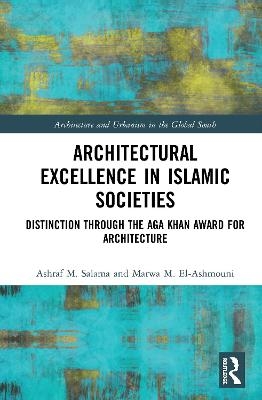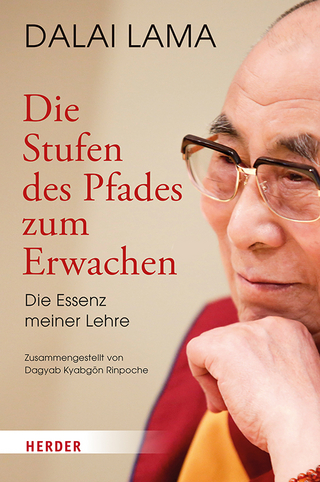
Architectural Excellence in Islamic Societies
Routledge (Verlag)
978-1-138-48255-5 (ISBN)
This book discusses architectural excellence in Islamic societies drawing on textual and visual materials, from the Aga Khan Documentation Center at MIT, developed over more than three decades. At the core of the discussion are the efforts, processes, and outcomes of the Aga Khan Award for Architecture (AKAA).
The AKAA recognises excellence in architectural and urban interventions within cities and settlements in the Islamic world which are continuously challenged by dramatic changes in economies, societies, political systems, decision-making, and environmental requirements. Architectural Excellence in Islamic Societies responds to the recurring question about the need for architectural awards, arguing that they are critical to validating the achievements of professional architects while making their contributions more widely acknowledged by the public. Through analysis and critique of over sixty awarded and shortlisted projects from over thirty-five countries, this book provides an expansive look at the history of the AKAA through a series of narratives on the enduring values of architecture, architectural and urban conservation, built environment sustainability, and architectural pluralism and multiple modernities.
Architectural Excellence in Islamic Societies will appeal to professionals and academics, researchers, and upper-level students in architectural history and theory and built environment related fields.
Ashraf M. Salama, PhD, is Professor of Architecture and Head of the Department of Architecture at the University of Strathclyde Glasgow, UK (2014–2020). Professor Salama has published over 170 papers and book chapters in the international refereed press and has authored and co-edited ten books. He is the UIA 2017 recipient of the Jean Tschumi Prize for Excellence in Architectural Education and Criticism. He is the Founding and Chief Editor of Archnet-IJAR: International Journal of Architectural Research and serves on the boards of numerous international journals. Marwa M. El-Ashmouni, PhD, is Assistant Professor in the Department of Architectural Engineering, Beni-Suef University, Egypt. Dr. El-Ashmouni earned her degrees from the University of Adelaide, Australia, and Ball State University, USA. El-Ashmouni was awarded the University of Adelaide Medal of Research Excellence (2013). Her publications include a book chapter in Christiane Gruber, ed. Islamic Architecture on the Move (2016), entitled "Mobility and Ambivalences: Negotiating Architecture Identities during Khedive Ismail's Reign (1863–79)."
List of Illustrations
Preface
Acknowledgements
Chapter 1
Introduction: Towards Decolonised Narratives of Architectural Excellence
Decolonising Geographies of Architectural Knowledge
The Aga Khan Award for Architecture (AKAA)
Architectural Excellence: Perceived and Measured Quality
A Prelude for Narratives of Architectural Excellence in Islamic Societies
The Content and Structure of this Volume
Notes
References
Chapter 2
Reinstating the Enduring Values of Architecture
Architectural Elements of Endurance
Hassan Fathy (1900–1989)
Contextual Inspirations, Beliefs and Ideologies, Fathy’s Oeuvre, Fathy’s Influence
Rifat Chadirji (1926)
Contextual Influences, Beliefs and Ideologies, Chadirji ‘s Oeuvre, Chadirji‘s Influence
Geoffrey Bawa (1919–2003)
Contextual Inspirations, Beliefs and Ideologies, Bawa’s Legacy, Bawa’s Influence
Oleg Grabar (1929–2011)
Contextual Influences, Beliefs and Ideologies, Key Contributions, Grabar’s Impact
The Shared Denominator and the Enduring Values of Architecture
Notes
References
Chapter 3
From Restoration to Sustainable Urban Conservation
On Restoration and Reuse of Historic Structures
Glimpses from Selected Projects
Conservation of Sidi Bou Said, Tunisia (awarded 1977–1980); Darb Qirmiz Quarter, Egypt (awarded 1981–1983); Mostar Old Town Conservation, Bosnia and Herzegovina (awarded 1984–1986); Restoration of the Great Omari Mosque, Lebanon (awarded 1987–1989); Rehabilitation of Asilah, Morocco (awarded 1987–1989); Restoration of Bukhara Old City, Uzbekistan (awarded 1993–1995); New Life for Old Structures, Iran (awarded 1999–2001); Al-Abbas Mosque Restoration, Yemen (awarded 2002–2004); Rehabilitation of the Walled City of Nicosia, Cyprus (awarded 2005–2007); Rehabilitation of Shibam, Yemen (awarded 2005–2007); Revitalisation of Recent Heritage of Tunisia (awarded 2008–2010); Restoration of Rubber Smokehouse, Malaysia (shortlisted 2008–2010); Restoration of Souk Waqif, Qatar (shortlisted 2008–2010); Rehabilitation of Tabriz Bazar, Iran (awarded 2011–2013); Revitalisation of Birzeit Historic Centre, Palestine (awarded 2011–2013); Manouchehri House, Iran (shortlisted 2014–2016)
Introspective Analysis
Values of Excellence and the Narrative of Architectural and Urban Conservation
Notes
References
Chapter 4
Sustainable Architecture and Ecological Infrastructure
The Spectrum of Sustainable and Ecological Architecture
Glimpses from Selected Projects
Menara Mesiniaga/ IBM Headquarter, Malaysia (awarded 1993–1995); Datai Hotel, Malaysia (awarded 1999–2001); Moulmein Rise Residential Tower, Singapore (awarded 2005–2007); Wadi Hanifa Wetlands, Saudi Arabia (awarded 2008–2010); The Green School, Indonesia (shortlisted 2008–2010); Palmyra House, India (shortlisted 2008–2010); Ceuta Public Library, Spain (awarded 2011–2013); Post-Tsunami Housing, Sri Lanka (shortlisted 2011–2013); Mapungubwe Interpretation Centre, South Africa (shortlisted 2011–2013); Apartment No.1, Iran (shortlisted 2011–2013); Kantana Film and Animation Institute, Thailand (shortlisted 2011–2013); House of 40 Knots, Iran (shortlisted 2014–2016); Makoko Floating School, Nigeria (shortlisted 2014–2016)
Reflection and Discussion
Values of Excellence and the Narrative of Built Environment Sustainability
References
Note
Chapter 5
Plurality of Architectural Approaches and Multiple Modernities
Modernity, Identity, and Plurality
Glimpses from Selected Projects
The Intercontinental Hotel & Conference Centre, Saudi Arabia (awarded 1978–1980); The National Assembly Building, Bangladesh (awarded 1987–1989); Al-Kindi Plaza, Saudi Arabia (awarded 1987–1998); The Nubia Museum, Egypt (awarded 1999–2001); Olbia Social Centre, Turkey (awarded 1999–2001); B2 House in Büykhüsun Village, Turkey (awarded 2002–2004); The Royal Embassy of The Netherlands, Ethiopia (awarded 2005–2007); Ipekyol Textile Factory in Edirne, Turkey (awarded 2008–2010); Issam Fares Institute for Public Policy, Lebanon (awarded 2014–2016); The Royal Academy for Nature Conservation, Jordan (shortlisted 2014–2016)
Reflection and Discussion
Values of Excellence and the Narrative of Architectural Pluralism
Notes
References
Chapter 6
Decolonisation Aspirations of Architecture in Islamic Societies
Generated Discourse: Seminars and Monographs
Pluralistic Aspects of Architectural Excellence
Themes and Reflections
Expanding the Scope of Architecture
Outlook: A Sustained Quest for Decolonised Architectural Excellence
Notes
References
| Erscheinungsdatum | 17.07.2020 |
|---|---|
| Reihe/Serie | Architecture and Urbanism in the Global South |
| Zusatzinfo | 60 Halftones, black and white; 60 Illustrations, black and white |
| Verlagsort | London |
| Sprache | englisch |
| Maße | 156 x 234 mm |
| Gewicht | 589 g |
| Themenwelt | Geisteswissenschaften ► Religion / Theologie |
| Technik ► Architektur | |
| ISBN-10 | 1-138-48255-2 / 1138482552 |
| ISBN-13 | 978-1-138-48255-5 / 9781138482555 |
| Zustand | Neuware |
| Haben Sie eine Frage zum Produkt? |
aus dem Bereich


